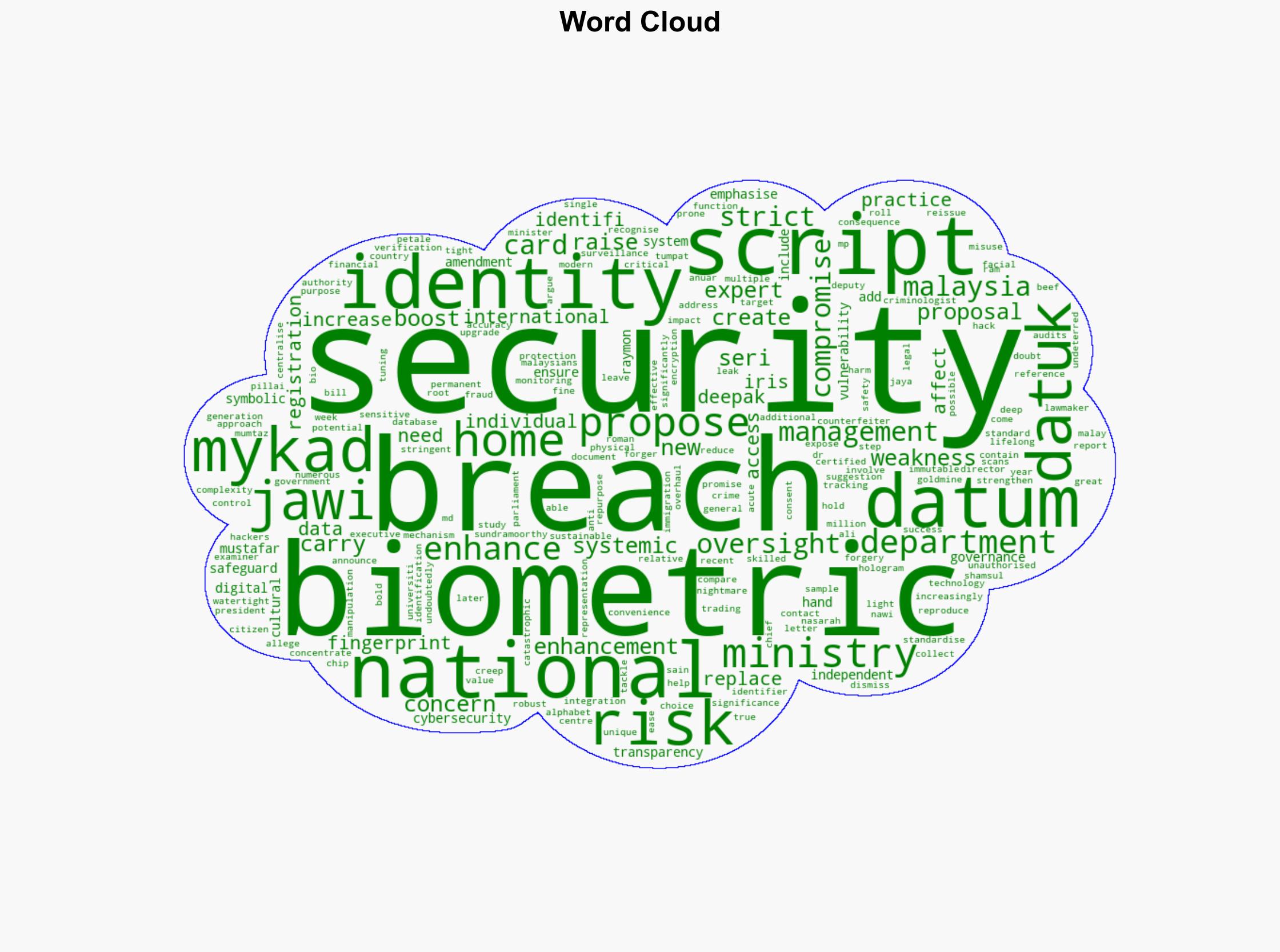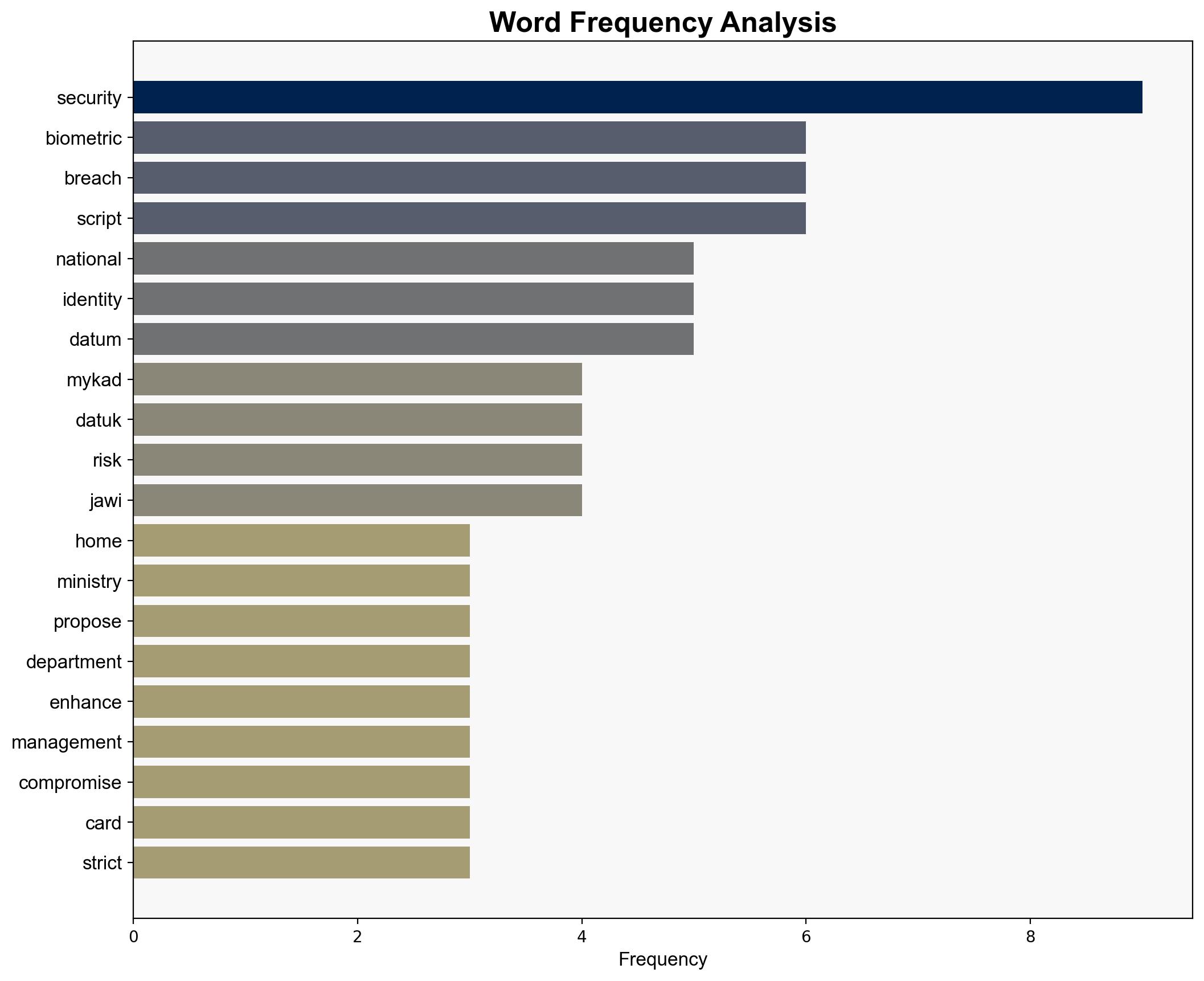New MyKad proposal carries data breach risk – The Star Online
Published on: 2025-09-06
Intelligence Report: New MyKad proposal carries data breach risk – The Star Online
1. BLUF (Bottom Line Up Front)
The proposal to introduce a new MyKad with enhanced biometric features carries significant data breach risks. The most supported hypothesis is that the introduction of multiple biometric identifiers increases the risk of data breaches, which could have severe and lasting impacts on individuals. It is recommended to implement robust cybersecurity measures and independent oversight to mitigate these risks. Confidence level: Moderate.
2. Competing Hypotheses
1. **Hypothesis A**: The new MyKad with enhanced biometric features will improve national security by reducing identity fraud and forgery.
– **Supporting Evidence**: The inclusion of biometric identifiers like fingerprints, facial, and iris recognition is internationally recognized as good practice for identity management.
– **Contradictory Evidence**: Experts argue that these features create systemic weaknesses and increase the risk of data breaches.
2. **Hypothesis B**: The new MyKad increases the risk of data breaches, leading to potential misuse and long-term vulnerabilities for individuals.
– **Supporting Evidence**: The immutable nature of biometric data means that once compromised, it cannot be replaced, leading to lifelong vulnerabilities.
– **Contradictory Evidence**: Proponents argue that with proper cybersecurity measures, the risks can be managed.
Using the Analysis of Competing Hypotheses (ACH) 2.0, Hypothesis B is better supported due to the irreversible nature of biometric data breaches and the historical context of data breaches in government departments.
3. Key Assumptions and Red Flags
– **Assumptions**: It is assumed that the proposed cybersecurity measures will be sufficient to protect the biometric data. There is also an assumption that the inclusion of Jawi script will not significantly impact security.
– **Red Flags**: The historical context of data breaches in government departments raises concerns about the adequacy of current cybersecurity practices.
– **Blind Spots**: The potential for misuse of biometric data for surveillance purposes is not fully addressed.
4. Implications and Strategic Risks
– **Cybersecurity Risks**: A breach could lead to unauthorized access and misuse of sensitive personal data.
– **Economic Risks**: Potential costs associated with data breach management and compensation.
– **Geopolitical Risks**: Erosion of public trust in government systems could lead to political instability.
– **Psychological Risks**: Public fear and anxiety over privacy violations and identity theft.
5. Recommendations and Outlook
- Implement robust cybersecurity measures, including encryption and regular audits.
- Establish independent oversight to ensure transparency and accountability.
- Scenario Projections:
- Best Case: Enhanced security with no significant breaches, leading to increased public trust.
- Worst Case: Major data breach resulting in widespread identity theft and loss of public confidence.
- Most Likely: Minor breaches occur, prompting gradual improvements in cybersecurity measures.
6. Key Individuals and Entities
– Datuk Seri Dr. Shamsul Anuar Nasarah
– Deepak Pillai
– Datuk Mumtaz Md Nawi
– Raymon Ram
– Datuk Sundramoorthy
– Datuk Seri Mustafar Ali
7. Thematic Tags
national security threats, cybersecurity, counter-terrorism, regional focus




